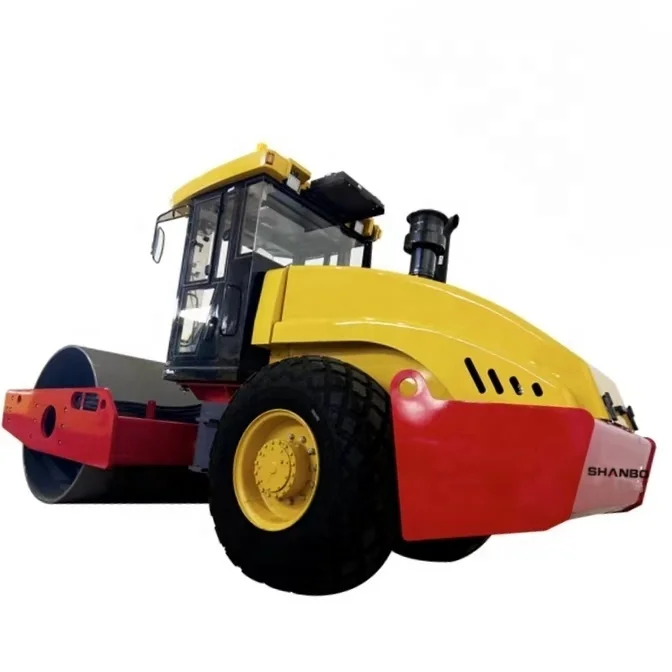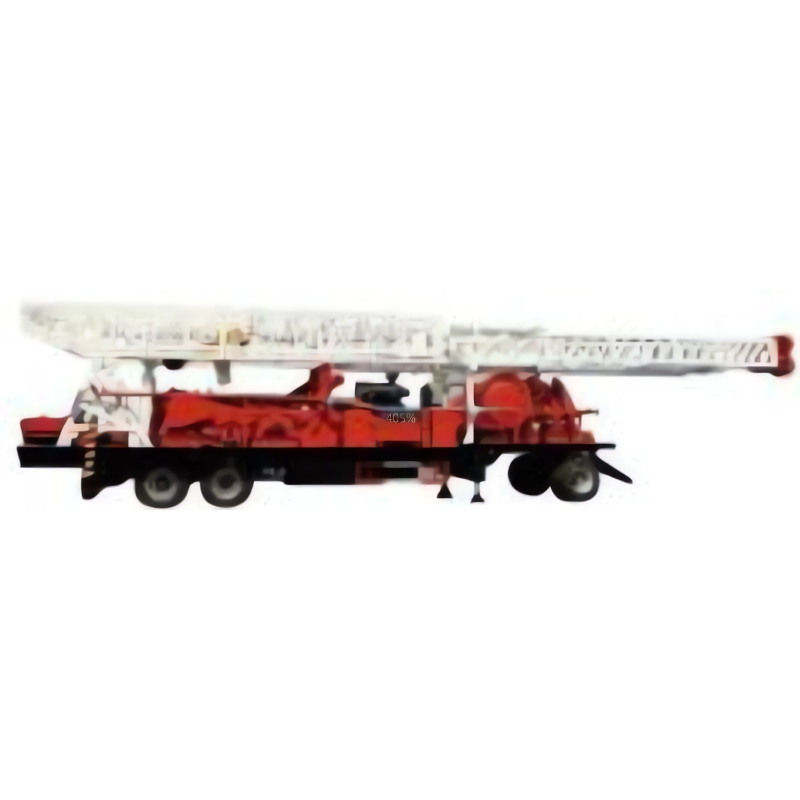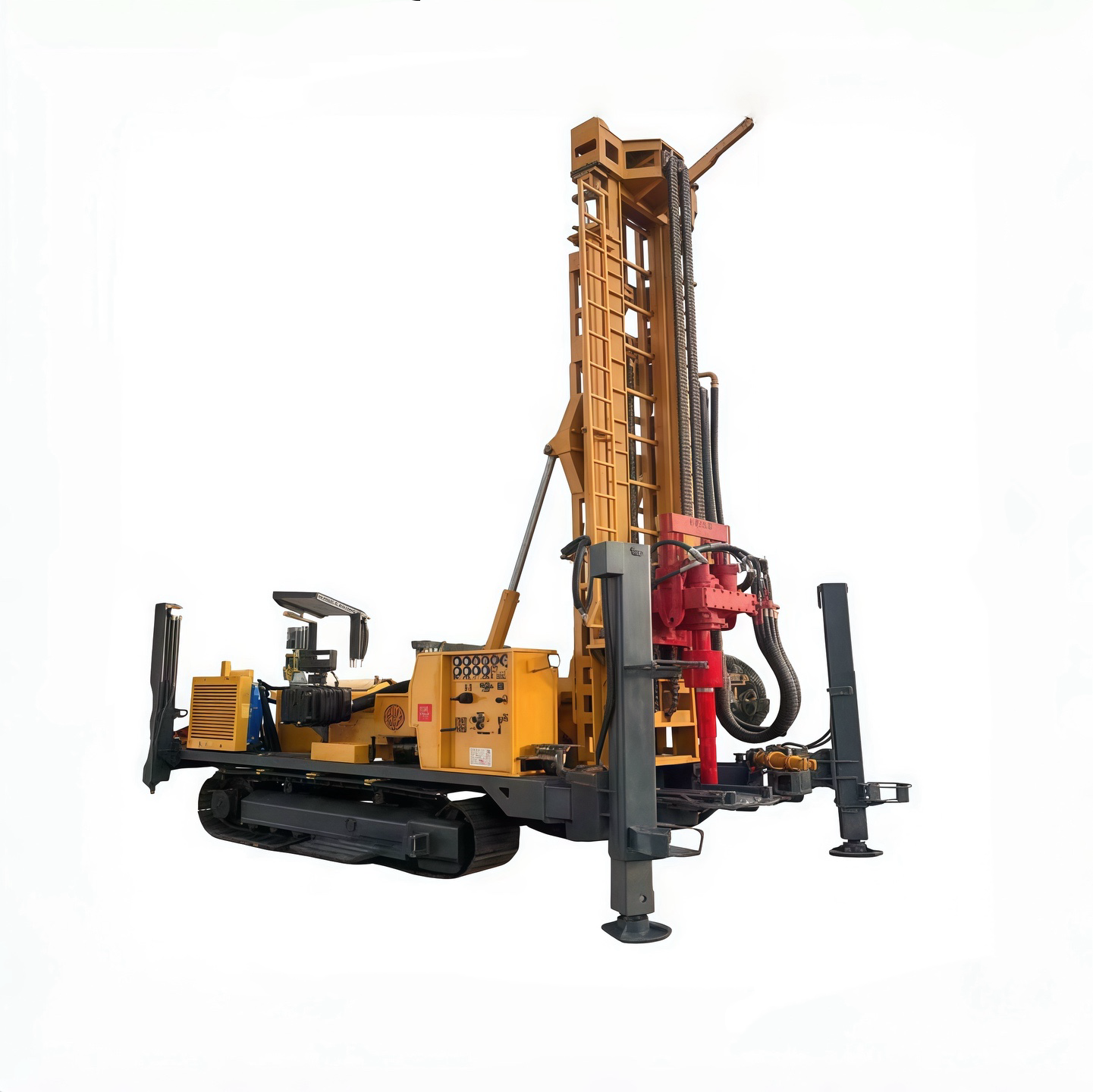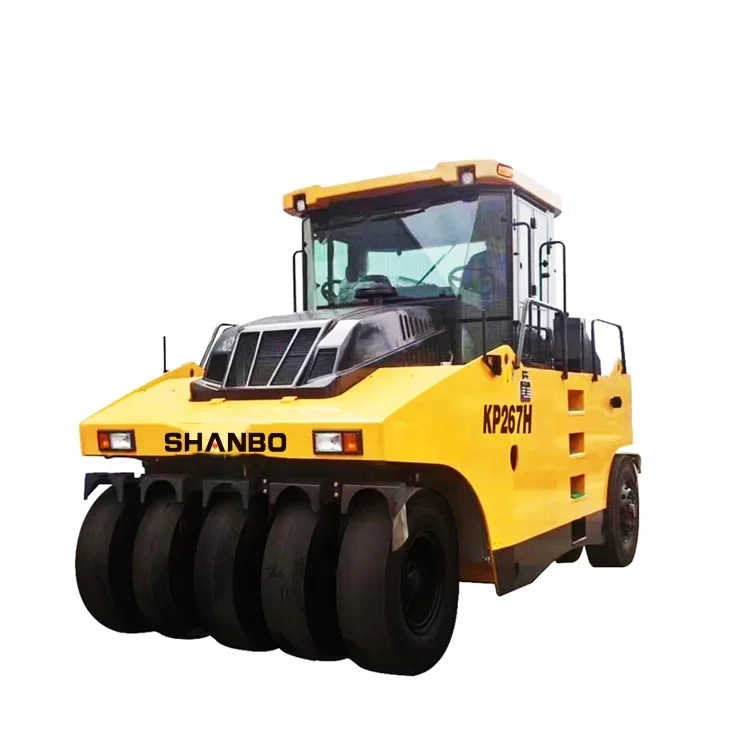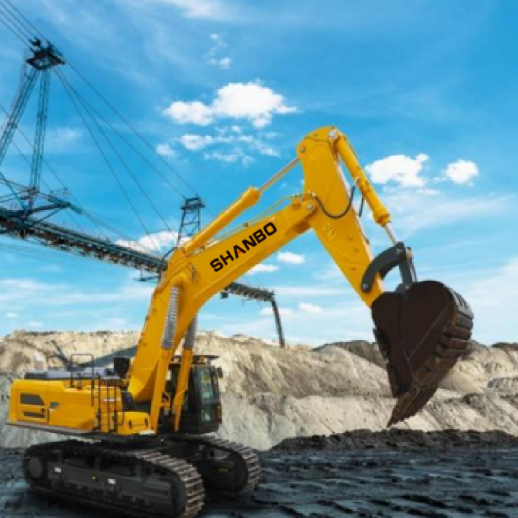Мере безбедности при раду са багером са корпама
Роторни багери су колосалне машине које се углавном користе у површинским рударским радовима за ускопавање великих количина земље, угля или других материјала. Ови инжењерски чудеса, са својим масивним ротирајућим точковима опременим више кованица, високо су ефикасни али и по природи опасни због своје величине, комплексности и радног окружења. Рад са роторним багером захтева строго прidржавање мера безбедности ради заштите оператора, послужења за одржавање и осталих запослених у непосредној околини.
Овај чланак обухвата детаљне мере безбедности при раду са роторним багером, укључујући провере пре почетка рада, правилнике током рада, безбедност одржавања, еколошке аспекте и поступке у случају хитних ситуација. Праком ових мера безбедности оператори могу да минимизирају ризике и осигурати безбедну радну средину.
Упознајте роторни багер
Pre nego što se upustimo u mere bezbednosti, neophodno je razumeti osnovne komponente i radni kontekst rupeksa sa kofičnim točkom. Rupex sa kofičnim točkom sastoji se od velikog rotirajućeg točka sa više kofa koje uzimaju materijal, transportnog sistema za premeštanje iskopanog materijala i čvrste podkonstrukcije koja omogućava pomeranje po lokaciji rudnika.
Radna okolina rupeksa sa kofičnim točkom je obično izuzetno teška, sa neravnim terenom, prašinom, bukom i mogućim geološkim nestabilnostima. Operateri rade u kontrolnoj kabini, koja se najčešće nalazi na visini iznad zemlje, i upravljaju kretanjem mašine putem sofisticiranog kontrolnog sistema. S obzirom na veličinu mašine i opasne uslove, bezbednost ima prioritet tokom svih faza rada.
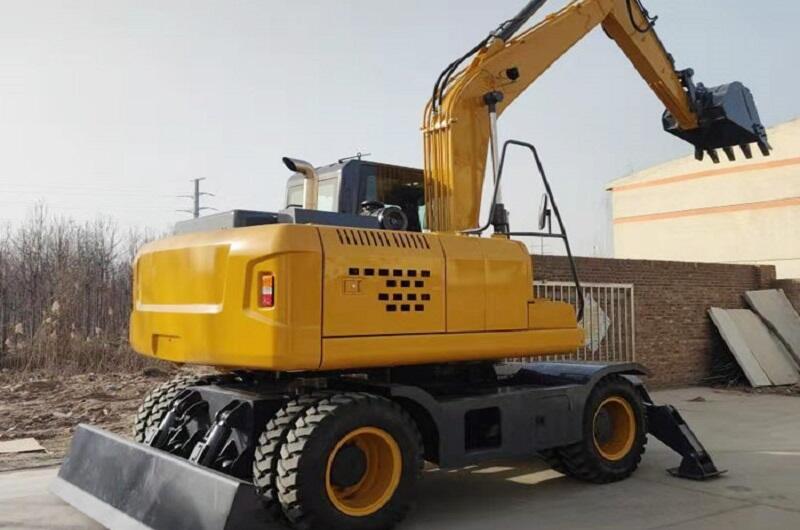
Provera sigurnosti pre radnje
1. Obuka operatera i certifikacija
Оператори морају да приме детаљну обуку специфичну за модел багера са корпом који ће користити. То укључује разумевање контрола машине, њених ограничења и процедура у случају ванредних ситуација, као што су протоколи искључења и планови евакуације. Познавање опасности специфичних за локацију – као што је нестабилно тло или надземни електрични водови – такође је од изузетне важности.
Сертификат потврђује да оператори имају квалификације за руковање опремом и да разумеју повезане ризике. Редовни курсеви утврђивања знања и процене помажу у одржавању високих стандарда безбедности и информисаности оператора о новим праксама и прописима.
2. Инспекција машине
Пре почетка рада, детаљна инспекција осигурава да је багер са корпом сигуран и у потпуно исправном стању. Кључне компоненте – као што су корпа, кофи и систем транспортера – морају се проверити у циљу утврђивања хабања, оштећења или неправилног положаја. Хидраулични и електрични системи треба да буду слободни од цурења, изложених жица или неисправних делова.
Структурни интегритет је подједнако важан; шасија, носеће конструкције и противтеже морају се испитати у циљу проналажења пукотина или замора. Све сигурносне уређаје, укључујући дугмад за хитно заустављање и аларме, неопходно је тестирати. Обавезно је извршити и документовати листу контролних тачака пре почетка рада, а сви проблеми треба да буду решени пре него што се започне рад на машини.
3. Защитна средства за рад (ЗСР)
Сви запослени који раде са багерима или у њиховој близини морају носити одговарајућа защитна средства за рад. То укључује кациге како би се спречиле повреде од падајућих предмета, одећу са високом видљивошћу ради боље уочљивости у прашним или слабо осветљеним условима и чарапе са челичним носовима како би се спречиле повреде стопала од тешких машина.
Због високог нивоа буке и могућности присуства прашине у ваздуху, обавезна су и средства за заштиту слуха и маске за дисајни пут. Политика на терену мора усвојити захтеве у вези ЗСР-а, а прислушкивање тим захтевима треба да се прати кроз редовне безбедносне провере.
4. Процена утицаја на животну средину
Pouzdana procena stanja životne sredine pomaže u sprečavanju nesreća koje su povezane sa nestabilnošću tla ili nepovoljnim uslovima. Teren mora biti dovoljno stabilan da izdrži težinu bubnjače i spredi prevrtanje ili kolaps, a pre početka rada treba uzeti u obzir i vremenske uslove poput jake burе ili obilnih kiša.
Potrebno je identifikovati i označiti potencijalne opasnosti u okolini – kao što su elektroenergetski vodovi, akvatorije ili druga velika mašinerija. Rukovodioci terena treba da sarađuju sa geotehničkim inženjerima kako bi proverili bezbednost životne sredine i utvrdili da li je lokacija pogodna za rad.
Smernice za bezbedno vođenje rada
1. Praktike sigurnog rada
Operatori moraju održavati sigurno okruženje tako što će neovlašćeno osoblje i opremu držati na bezbednom rastojanju od bubnjače. Zone ograničenog pristupa treba jasno obeležiti barikadama ili saobraćajnim znakovima. Pored toga, bubnjaču treba upravljati glatkim i kontrolišanim kretanjem kako bi se sprecio mehanički napon ili gubitak stabilnosti.
Ближња пажња у раду машине је од кључне важности. Оператори морају редовно пратити индикаторе на контролном панелу, као што су хидраулични притисак, брзина точкова и функције транспортера. Претерана оптерећеност машине мора бити избегавана, а ометања — посебно коришћење мобилних уређаја — строго забрањена током рада.
2. Протоколи комуникације
Јасна и стална комуникација је неопходна за безбедну координацију у рудничком окружењу. Опремите операторе и посаду на терену двосмерним радиима како бисте осигурали ажурирања у реалном времену и брзи одговор на промене услова.
Када вербална комуникација није могућа, користите стандардизоване знакове рукама или светлошћу да бисте избегли збуњеност. Састанци пре почетка смени треба да се одржавају свакодневно како би се прегледао план операције, истакли могући опасности и утврдили протоколи безбедности.
3. Безбедност кабине оператора
Kabina mora obezbediti siguran i ergonomski prostor za rada operatera. Treba da bude strukturno ispravna i opremljena jačanim staklom kako bi zaštitila od letećih delova tokom rada. Redovni pregledi treba da potvrde integritet svih komponenti kabine.
Udobnost operatera takođe igra ulogu u bezbednosti – sedište i kontrolne ručice moraju biti pravilno podeseni kako bi se smanjila umornost. Izbegni prepreke na putu do izlaza u slučaju nužde i držite ih lako dostupnim.
4. Praćenje stanja tla
Operatori moraju ostati budni na promene terena tokom iskopa, jer se stanje tla može brzo menjati. Znakovi poput pukotina, osedanja ili neuobičajenih vibracija treba da pokrenu odmah istraživanje i obustavu rada ukoliko je to neophodno.
Saradnja sa geotehničkim osobljem ključna je za praćenje stabilnosti tla u realnom vremenu, posebno u oblastima sklonim klizištima ili provalama. Rano otkrivanje i reagovanje na nestabilnost može sprečiti oštećenje opreme i zaštititi bezbednost radnika.
Bezbednost održavanja
Поступци закључавања/обележавања: Пре него што започнете било какве радове одржавања на багеру са корпицама, сви извори енергије – електрични, хидраулични и механички – морају бити потпуно искључени. Затим се морају применити уређаји за закључавање/обележавање (LOTO) да би се обезбедила машина и јасно означило да је у радовима. Само обучено и овлашћено особље има право да врши одржавање и мора пратити стандардизоване LOTO протоколе ради елиминације ризика од случајног покретања.
Безбедан приступ компонентама: Многе компоненте багера са корпицама налазе се на висини или у затвореним просторима, чиме се захтева безбедан начин приступа. Морају се користити правилно одржаване лестве, скеле или платформе, а за радове на висини треба инсталирати ограде или системе за заштиту од пада – као нпр. сигурносни појасови.
Безбедност алата и опреме: Сви алати који се користе током одржавања морају бити проверени пре употребе како би се утврдило да ли су оштећени или изношени. Избор правог алатa за посао смањује ризик и повећава ефикасност. Алати се морају чувати на безбедан и уређен начин да би се спречило падање или стварање препрека за ходање.
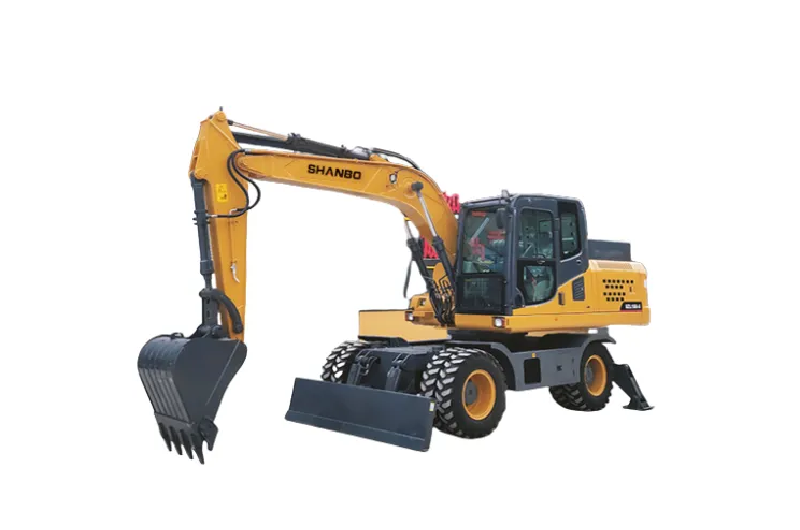
Разматрања у вези са безбедношћу животне средине и локације
Контрола прашине и буке
Багер са бубњем прави значајну прашину и буку, што негативно утиче на здравље радника и животну средину. Методе за сузбијање прашине, као што су прскање водом или интегрисани системи, треба користити за смањење присуства прашине у ваздуху.
Као мера за смањење буке, неопходно је обезбедити одговарајућу заштиту за слух и ограничити време боравка у зонама са високим нивоом буке. Редовно праћење квалитета ваздуха је неопходно како би се осигурало да ниво честица у ваздуху буде у оквиру дозвољених граница излагања и како би се заштитило здравље радника од дугорочних респираторних обољења.
Prevencija požara i eksplozija
Rudarske operacije često uključuju zapaljive materijale poput prašine uglja, goriva i maziva. Oni se moraju čuvati u propisanim, vatrootpornim kontejnerima, udaljenim od zona sa velikim saobraćajem, kako bi se smanjio rizik od zapaljenja. Same točkaste mašine moraju biti opremljene ugrađenim sistemima gašenja požara i imati dostupne, redovno kontrolisane prenosne vatrogasne aparate.
Pušenje i otvoreni plamen strogo moraju biti zabranjeni u blizini mašine i skladišta materijala. Redovna obuka za požarnu sigurnost i vežbe su ključne za osiguranje da radnici brzo i efikasno reaguju u slučaju hitne situacije.
Управљање саобраћајем
Teška oprema, kamioni i osoblje često se kreću preko radilišta, što povećava rizik od sudara. Jasna organizacija saobraćaja mora predvideti odvojene rute za vozila i pešake, uz postavljanje saobraćajnih znakova i fizičkih barijera radi definisanja bezbednih zona.
Vozila koja rade u blizini rotacionog bagera moraju biti opremljena funkcionalnim alarmima, svetlima i pomoćima za vidljivost. Imenovanje koordinatora saobraćaja pomaže u osiguranju glatkog kretanja po lokaciji i smanjuje rizik od nesreća sa mašinama ili radnicima.
Procedura u slučaju nepredviđenih događaja
Hitno isključivanje: Operateri moraju biti potpuno upućeni u dugmad za hitno zaustavljanje, znati njihove lokacije i kako brzo da ih aktiviraju. Obuka treba da uključuje redovnu praksu procedura isključivanja kako bi se osigurala brza i sigurna reakcija u kritičnim situacijama.
Kada se aktivira hitno isključivanje, to mora odmah biti saopšteno svim osobama putem radija ili alarmnih sistema. Mašina treba da ostane isključena dok se ne izvrši potpuna inspekcija i potvrdi da je bezbedno ponovno pokretanje.
Planovi evakuacije: Dobro definisan plan evakuacije je ključan u slučajevima hitne potrebe poput požara, kvara opreme ili nestabilnosti tla. Mora biti uspostavljena i komunicirana jasno označena putanja za evakuaciju i određena okupljišta svim osobama na lokaciji.
Redovno treba vršiti vežbe evakuacije kako bi se ojačala svest i osigurala brza i uredna reakcija. Treba postaviti sigurnosno osvetljenje i znakove ispred rotacionog bagera i važnih tačaka na lokaciji. Odgovorna osoba za bezbednost na lokaciji mora da nadgleda planiranje i sprovođenje evakuacije.
Prva pomoć i medicinska intervencija: Svaki rudarski objekat mora imati obučeno osoblje za prvu pomoć i dostupne medicinske resurse. Kompletne kutije sa priborom za prvu pomoć treba da budu dostupne i na rotacionom bageru i na strateškim tačkama objekta.
Закључак
Управљање багером са корпицама је комплексан задатак који захтева строга мера безбедности како би се заштитили радници и опрема. Провођењем свеобухватних провера пре почетка рада, строгим прислушкивањем оперативним упутствима, правилним одржавањем, управљањем ризицима у оквиру животне средине и добро планским процедурама у ванредним ситуацијама, оператори могу значајно да смање могућност несрећних случајева.
Интегрисањем ових мера у свакодневне радове, рударске операције могу у потпуности да искористе капацитете багера са корпицама, истовремено осигуравајући безбедну и сигурну радну средину за све запослене.
Препоручени производи
 Vesti
Vesti
-
„Water Savior“ 200 m obrnutog cirkulacije vodeni bušači stigli u Uzbekistan
2025-03-28
-
Šta je Buldožer? Sve što Trebate Znati
2025-02-18
-
Skid Steer u odnosu na buldožer: poređenje cene, efikasnosti i univerzalnosti
2025-11-13
-
Unutar fabricike buldožera: Kako se moderni buldožeri grade od nule
2025-11-12
-
Како безбедно и ефикасно управљати паучастим багером
2025-11-11
-
Šta je ekskavator? Vodič za početnike o ovoj neophodnoj građevinskoj mašini
2025-11-10


